Inverewe: The making of 'The Oasis of the North' in a wind-battered corner of north-west Scotland
Innovative 21st-century composting and mulching techniques combined with a 19th-century shelterbelt ensure that the famous gardens of Inverewe in Wester Ross continue to thrive. Caroline Donald explains more; photographs by Andrea Jones.
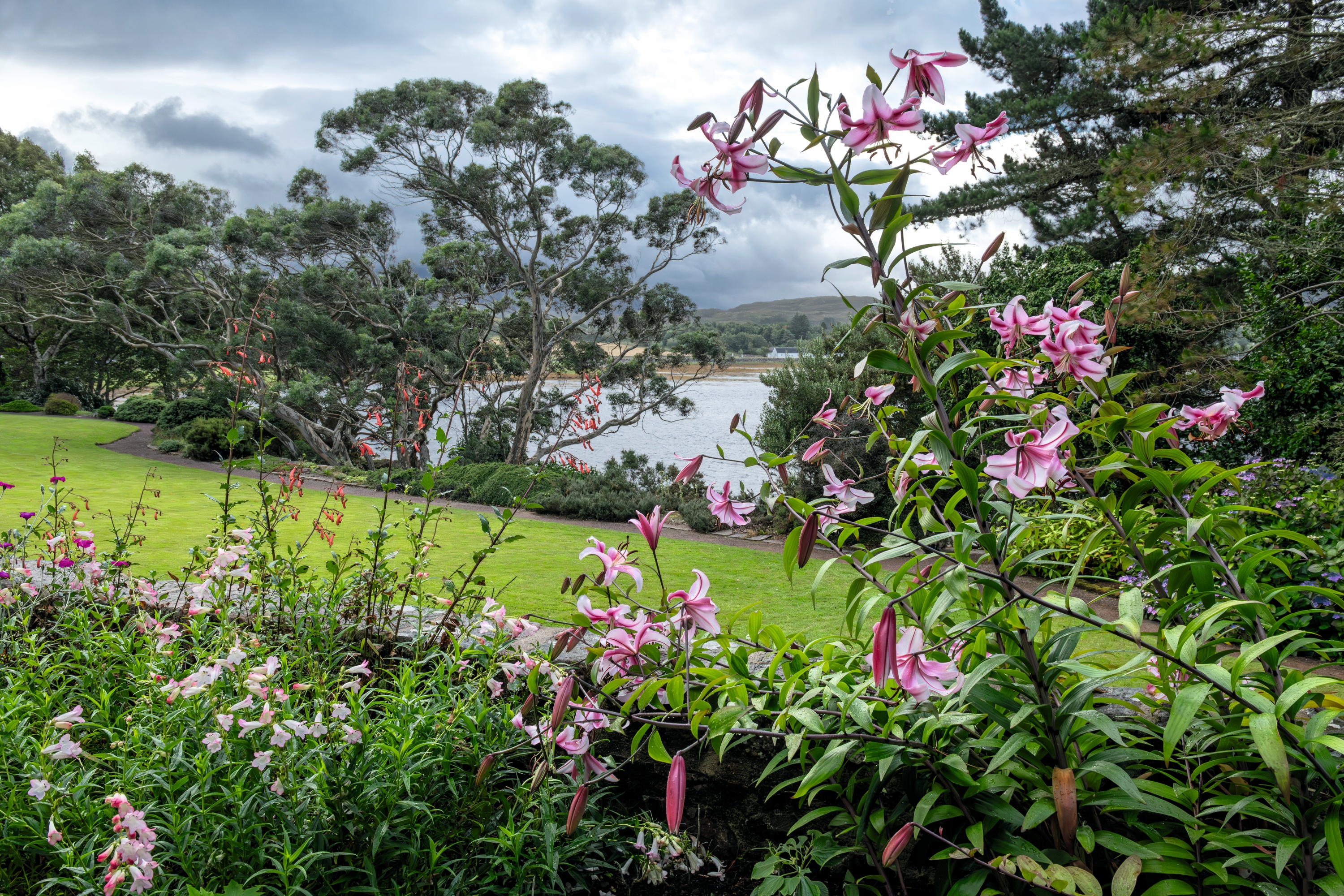
It is a privilege indeed for Country Life to be shown the large composting area at the National Trust for Scotland’s (NTS) 54-acre garden at Inverewe on Loch Ewe in Wester Ross. ‘I don’t bring many people up here,’ says Kevin Ball, who has been head gardener since 2006.
Composting has always been important in a garden conjured from bare rock and Mr Ball and his team pride themselves on producing large volumes of high-quality material within six months. It is here that woody and herbaceous waste, seaweed gathered from the shoreline and all the bamboo cutlery and paper cups and plates from the café end up. The materials are layered like a lasagne in long windrows and monitored by a digital probe to alert the gardeners when the heap gets close to 60˚C, so it can be turned (five times), then moved to another area to decompose further before being returned to the garden. ‘It’s a very professional system,’ says Mr Ball. ‘It kills off all the weed seeds and the nasty diseases and pathogens.’
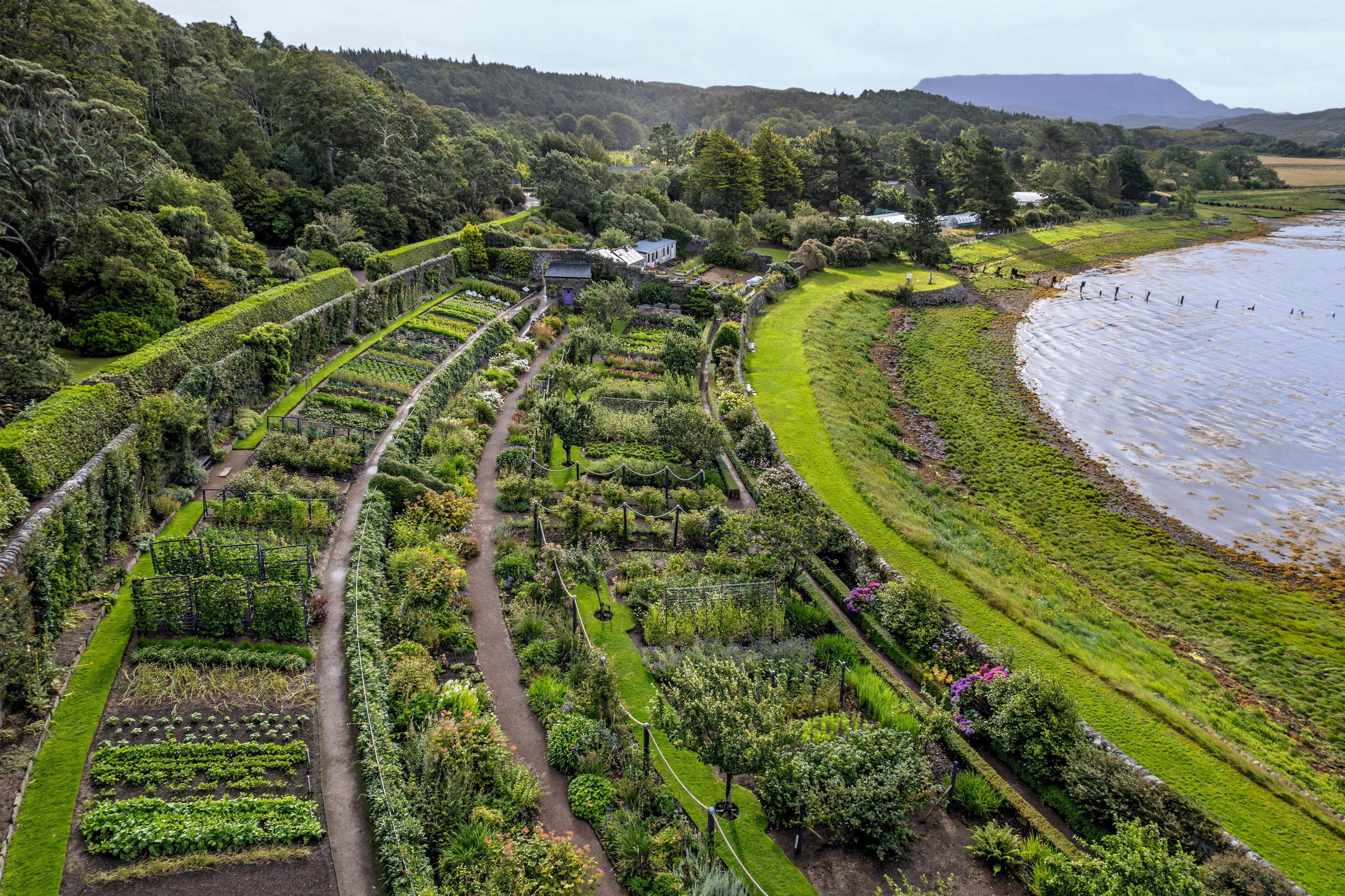
Looking south-east over the walled garden to Loch Ewe and the mountain of Sloch beyond.
That’s not all there is to admire backstage: next, the Exeter retort, a large metal drum on wheels that can be moved around the estate or lent to other NTS gardens. It is where the team makes biochar, a premium-quality charcoal created without oxygen to produce pure carbon in a process called pyrolysis. It is then crumbled and added to the compost as a supersonic soil improver to neutralise acidity, improve water and nutrient retention, aerate and offer habitats for microbes.
These self-sufficient innovations would surely have met the approval of Osgood Mackenzie, the garden’s creator. In 1862, his mother, Mary (née Hanbury), the wealthy second wife of Sir Francis, 12th laird of Gairloch, bought him the 2,000-acre estate to secure his financial future. Mackenzie wrote later of the high red-sandstone bluff that juts into the sea loch: ‘This promontory, where the rock was not actually a bare slab, was mostly covered with short heather and still shorter crowberry, and the only soil on it was some black peat, varying from an inch to two in depth… with the exception of two tiny bushes of dwarf willow about three feet high, there was nothing in the shape of a tree or shrub anywhere within sight.’
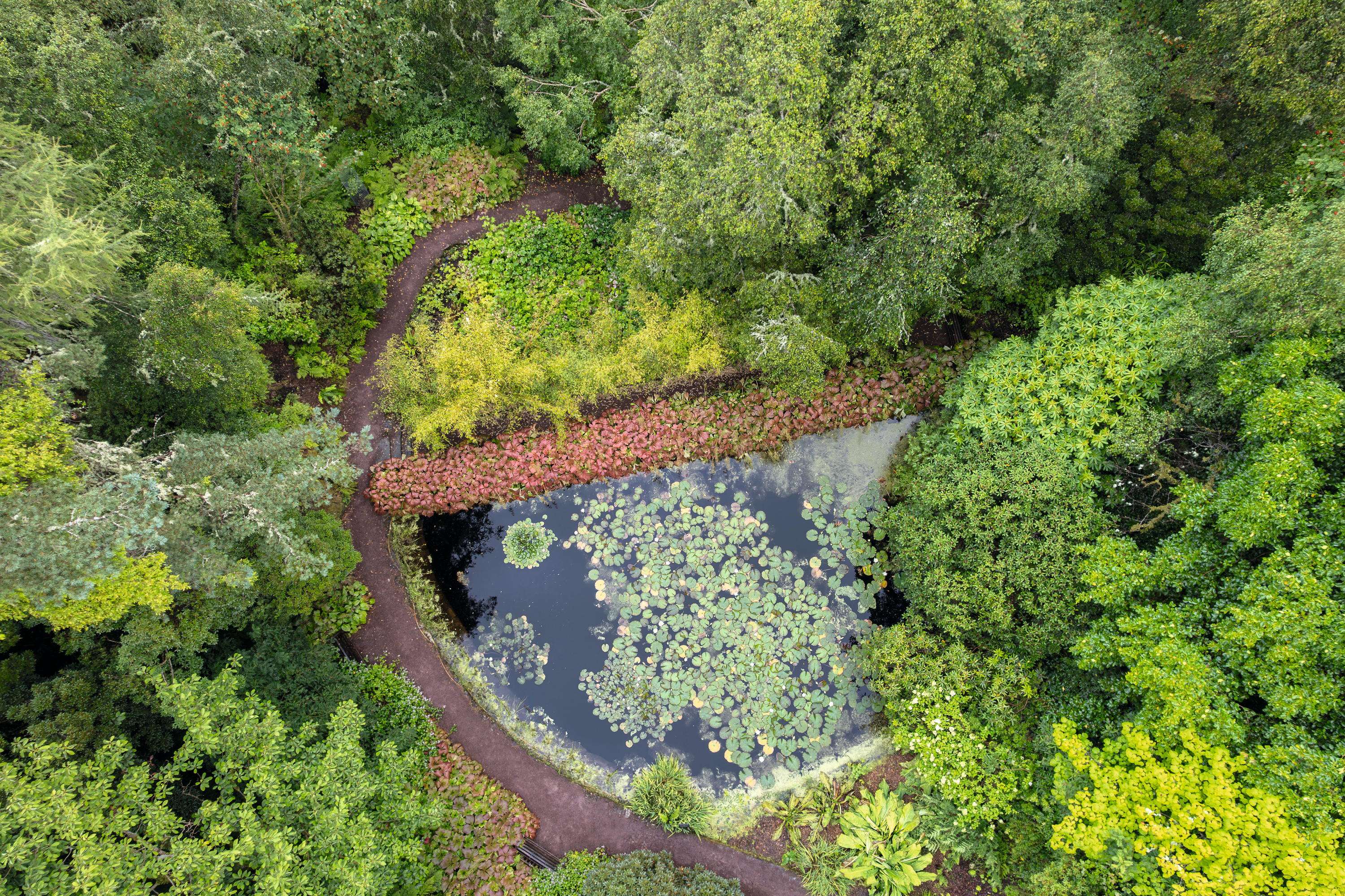
Waterlilies, rodgersia, rhododendrons and bamboo in the pond garden. With its high rainfall, Inverewe forms part of the temperate rainforest of the west of Scotland.
Whereas many 20 year olds might have accepted the gift of this most remote of locations, more than 75 miles north-west of Inverness, through gritted teeth, Mackenzie had inherited a love of plants from his father and grandfather and had faith. Although the land lies at 58 degrees, the same latitude as Moscow and Hudson Bay, and is battered by salt-laden Atlantic winds, the warm air of the Gulf Stream allowed him to plant a magnificent and varied garden of exotic species from around the world on the seemingly unpromising site. It would eventually be given to the NTS in 1952 by his daughter Mairi Sawyer, an equally keen plantswoman, who had further developed it after Mackenzie’s death in 1922.
Leaving the building of a Scottish baronial mansion to his mother (it burnt down, to be replaced by Sawyer in 1937 by the present house), Mackenzie initially set about planting a shelterbelt consisting largely of Scots pine, including 100 young trees grown on his half-brother Sir Kenneth Mackenzie’s estate at nearby Loch Maree — although he did later regret not having begun with the tougher, non-native Pinus montana. Were it not for this protection from the prevailing southwesterlies, it is unlikely that tender species from New Zealand and South Africa, shrubs and trees from Chile and Tasmania, rare rhododendrons, Chatham Island forget-me-nots, tree ferns and, more recently, a grove of Wollemi pines, would have survived in what would become known as the ‘oasis of the north’.
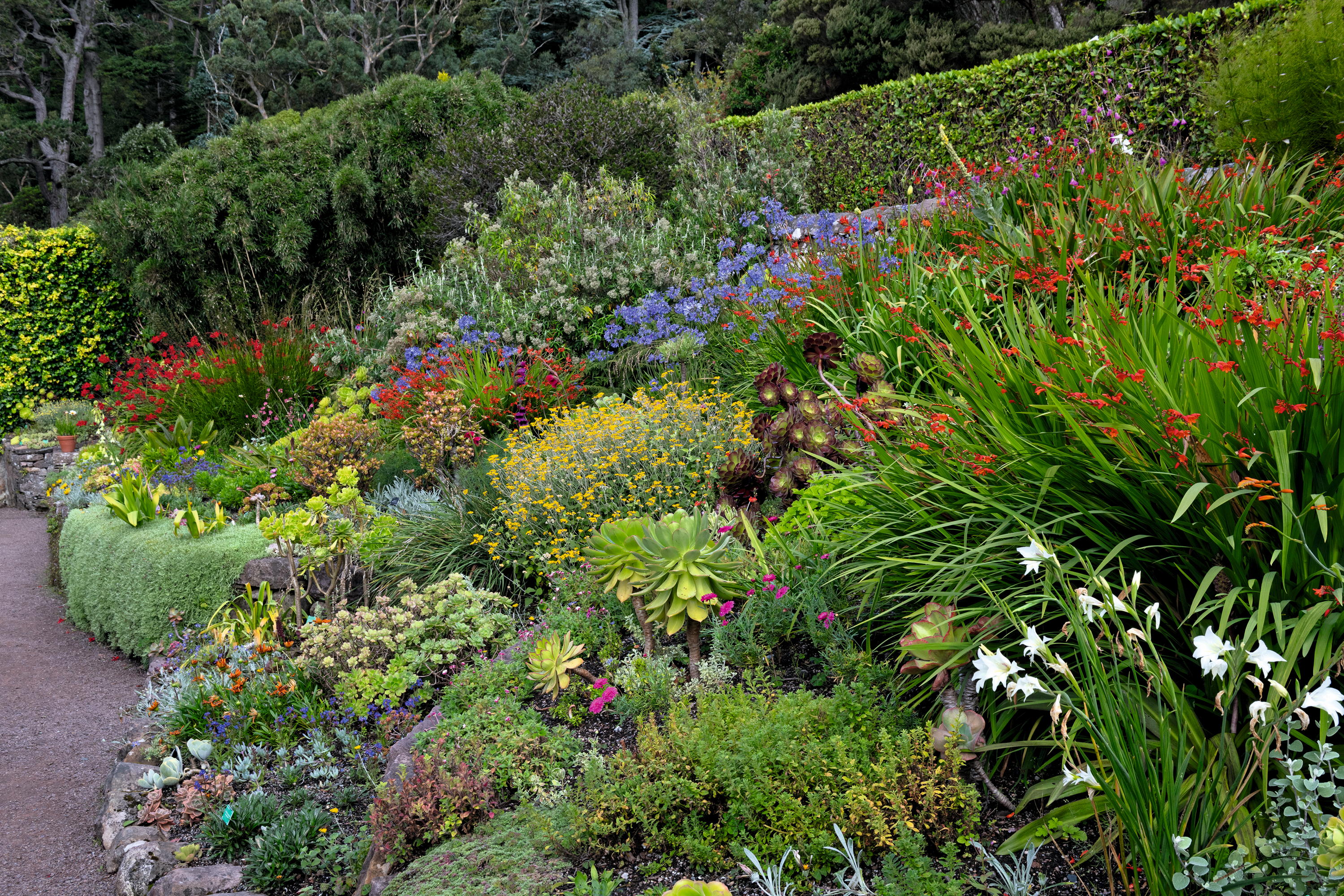
Aeoniums, gladiolus, crocosmia, agapanthus, restios and bamboo in the South Africa section of the walled garden.
Mackenzie had the shoreline hand-picked of thousands of pebbles and brought in tons of soil to make the famous one-acre walled kitchen garden that slopes down to the loch on wide curved terraces like an amphitheatre. Vegetables, fruit bushes and trained trees, many of them old Scottish varieties, are still grown there, largely for the staff to harvest, dotted with colour breaks of flowers, such as calendula, sweet peas, nicandra and dahlias.
Exquisite houses, the beauty of Nature, and how to get the most from your life, straight to your inbox.
It’s not only the star players, such as Californian redwoods, Tasmanian snow gum and the collection of aeoniums, that are important at Inverewe, but those species that require a closer eye to appreciate them: ferns, lichens, liverworts and mosses that flourish in the warm moist air. With its high rainfall, Inverewe is part of the temperate rainforest of the west of Scotland and the dappled shade in the woodland creates a humid, glade-like habitat in which epiphytes can flourish: dozens of lichen species thrive on the spreading limbs of the magnificent variegated turkey oak, Quercus cerris ‘Argenteovariegata’.
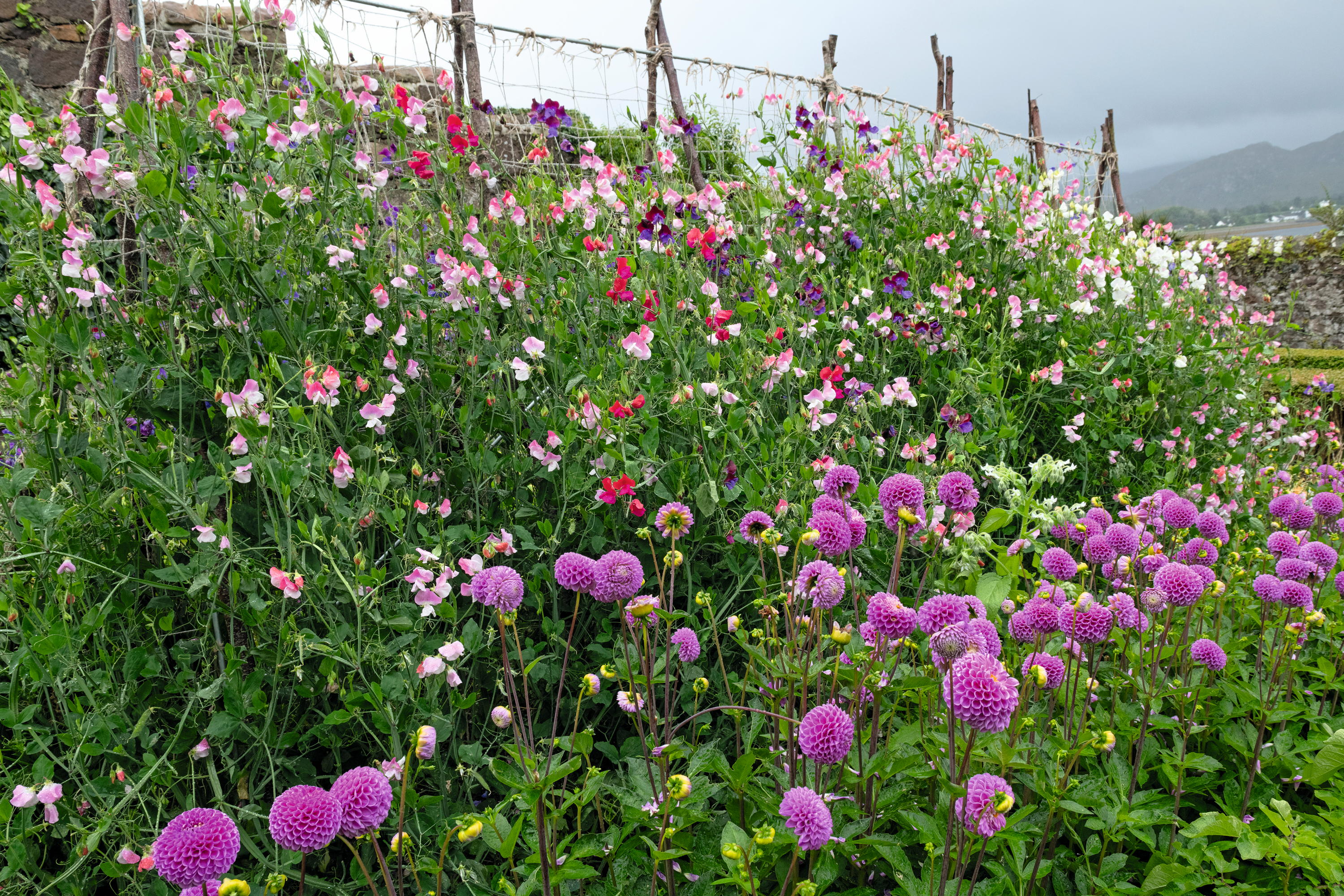
Dahlia ‘Franz Kafka’, an almost perfectly spherical pompom type, in the walled garden, with sweetpeas trained on netting behind.
As elsewhere, the changing climate is having its effects and rainfall has increased by 6in since 1960. ‘We have dry periods in spring that go on for weeks and when we do get rain in the gaps between, it is torrential and can last for days,’ says Mr Ball.
With such intensity, nutrients are leached from the soil and the arid spells affect the garden’s rhododendron collection, as their shallow root systems can dry out in the spring and summer, when their growth largely happens. This is where the supercharged composting and mulching helps, to keep replenishing and protecting the soil.
Most damaging are the winter storms, which can have far-reaching effects: January 2022’s Storm Corrie brought down many trees in the high viewpoint by the jetty. The biggest pine, dating back to Mackenzie’s day, also fell, wiping out several trees and opening up an area to the wind. Clearing up the damage to make the garden safe for its 60,000 annual visitors is a time-consuming exercise.
With some of the original planting more than 160 years old, ‘we’re trying our best to focus on the shelterbelt, because without it there won’t be an Inverewe garden,’ says Mr Ball. The gardeners have saved cones from the fallen pine and others in the area, as well as genetic material from species rhododendrons, such as an R. arboreum that was planted by Mackenzie. The rhododendrons are being propagated and the pines’ progeny are being planted out to replenish the ageing shelterbelt. The cycle of life continues and hope springs anew in the oasis of the North.
Find out more about Inverewe at the NTS website
This feature originally appeared in the print edition of Country Life — here's how you can subscribe to Country Life magazine.
-
 'The ugliness and craziness is a part of its charm': The Country Life guide to Bangkok
'The ugliness and craziness is a part of its charm': The Country Life guide to BangkokWhere to stay, where to eat and what to do in the Thai capital.
-
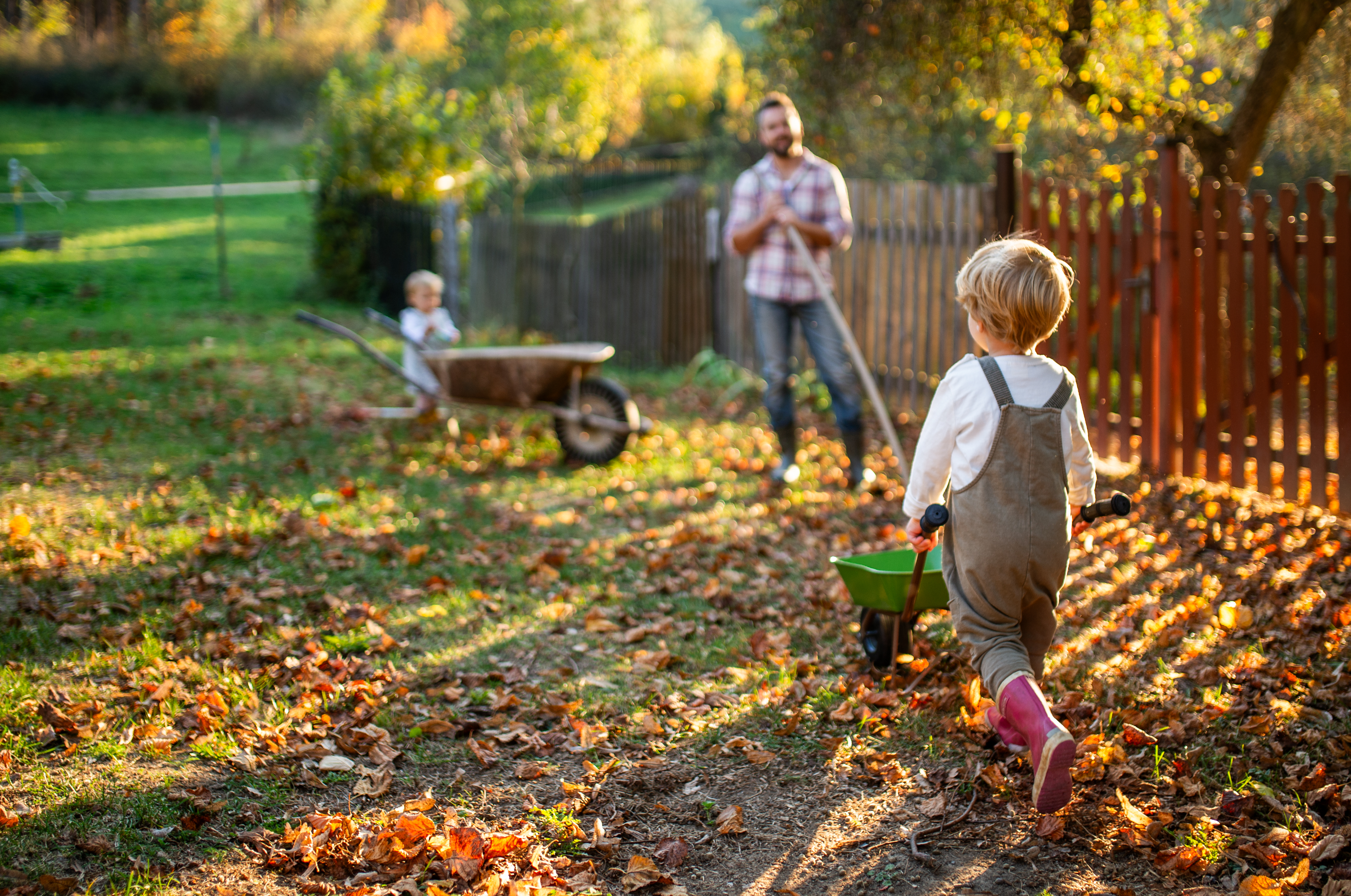 There are a billion microbes in a teaspoon of soil. Letting the leaves to Nature feeds and nourishes them... and blasting them with a leaf blower is disastrous
There are a billion microbes in a teaspoon of soil. Letting the leaves to Nature feeds and nourishes them... and blasting them with a leaf blower is disastrousLeaf blowers aren't just futile and polluting — they're actively bad for the health of your garden, not to mention your mental wellbeing. Time to reach for the rake, says Isabel Bannerman.
-
 There are a billion microbes in a teaspoon of soil. Letting the leaves to Nature feeds and nourishes them... and blasting them with a leaf blower is disastrous
There are a billion microbes in a teaspoon of soil. Letting the leaves to Nature feeds and nourishes them... and blasting them with a leaf blower is disastrousLeaf blowers aren't just futile and polluting — they're actively bad for the health of your garden, not to mention your mental wellbeing. Time to reach for the rake, says Isabel Bannerman.
-
 What trees taught me about perfect planting — Alan Titchmarsh
What trees taught me about perfect planting — Alan TitchmarshSense and patience is key to growing healthy trees, as a certain Mr Mackenzie showed a young Alan Titchmarsh
-
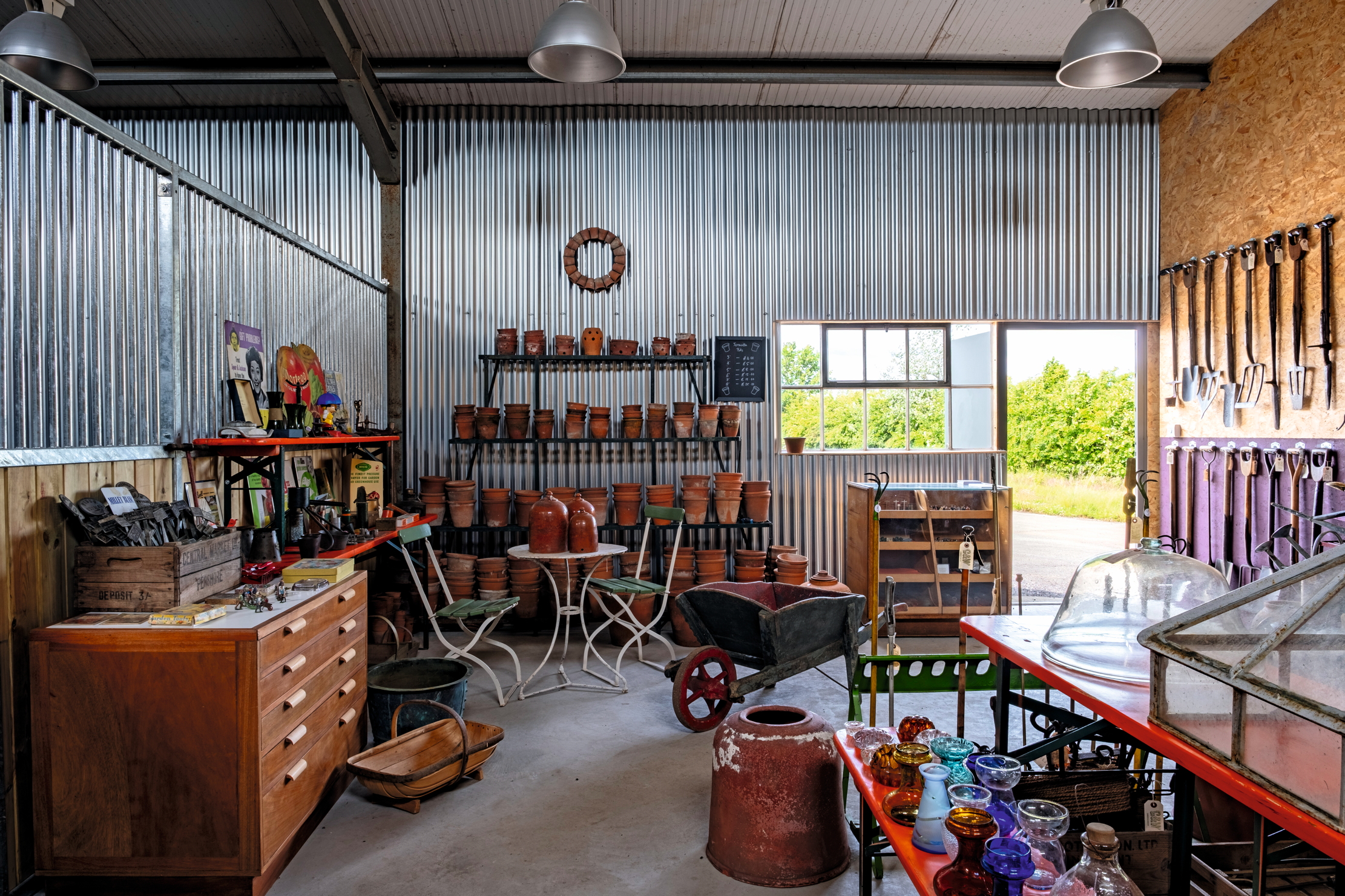 When it comes to making the perfect garden tool, the past has all the answers
When it comes to making the perfect garden tool, the past has all the answersMary Keen visits Garden & Wood, the mecca for dedicated gardeners who prefer using tools made in the 1940s
-
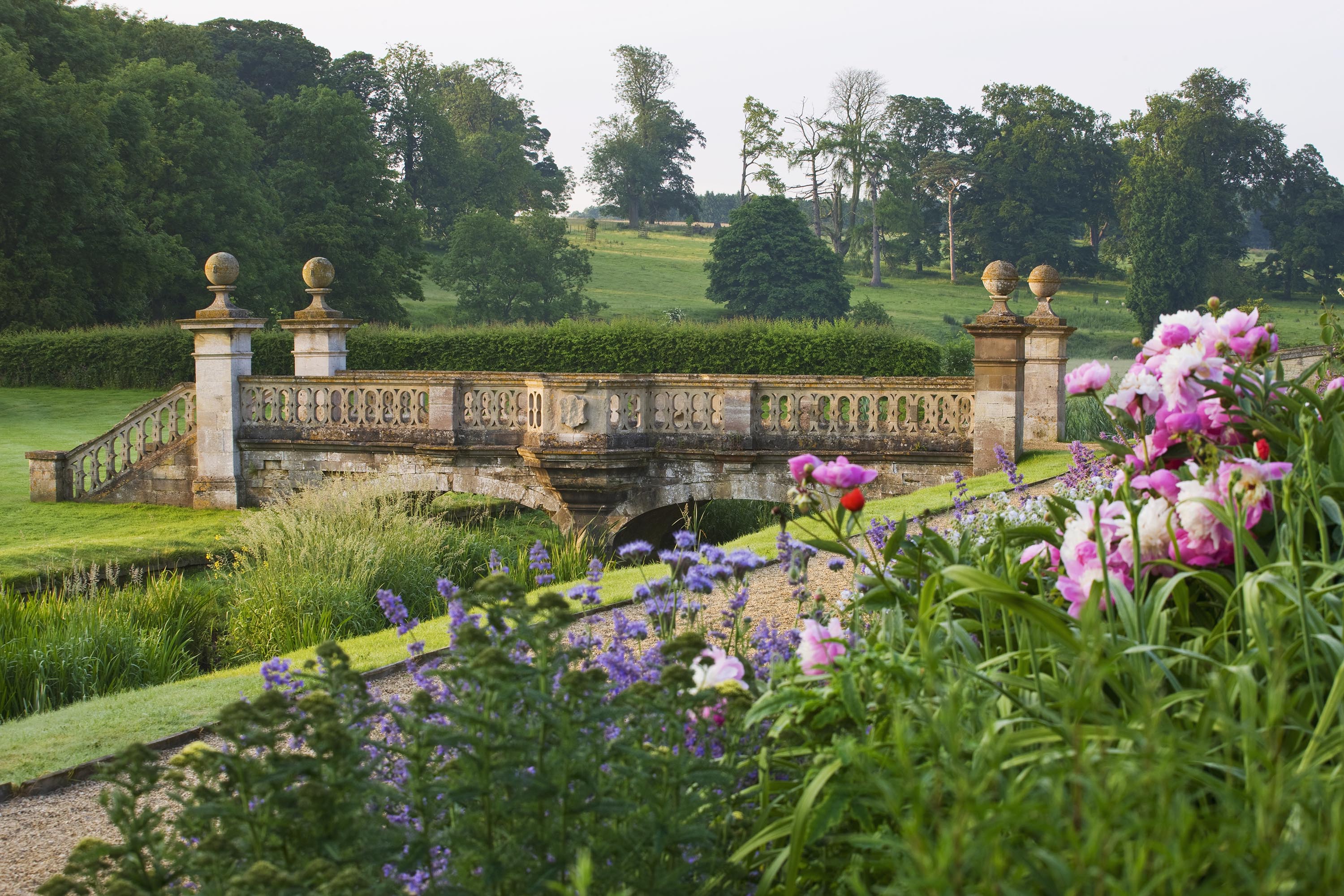 'A dream of Nirvana... almost too good to be true': The sweet peas of Easton Walled Gardens, and how you can replicate their success at home
'A dream of Nirvana... almost too good to be true': The sweet peas of Easton Walled Gardens, and how you can replicate their success at homeUrsula Cholmeley, who has spent 25 years restoring Easton Walled Gardens, recommends sowing sweet peas now for stronger plants that will better withstand the weather.
-
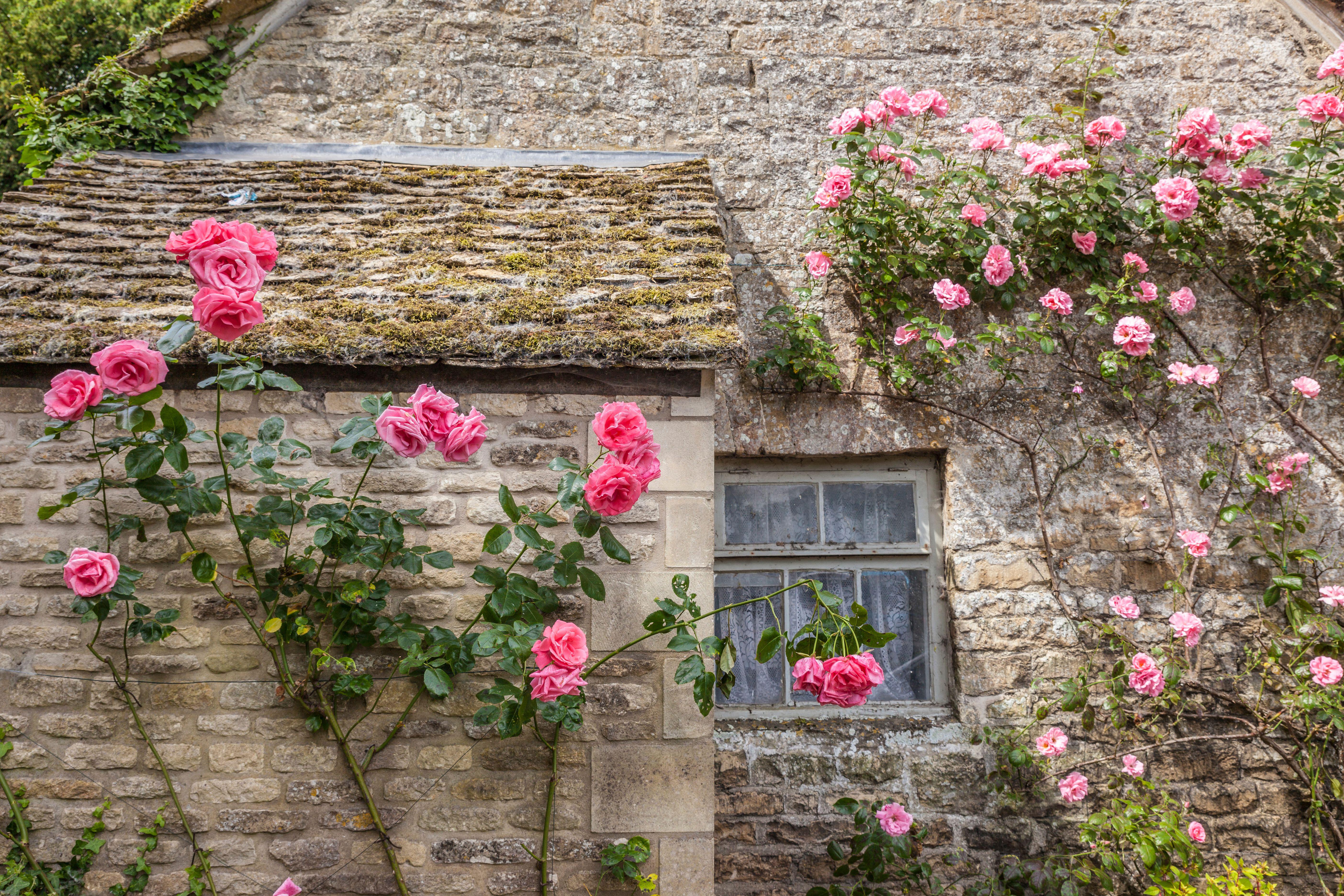 How to choose the perfect rose this bare root season
How to choose the perfect rose this bare root seasonLooks can be deceiving: bare root roses are hardier and more sustainable than potted ones, says Tabi Jackson Gee, who moved to a cottage in Wiltshire and went about finding the perfect plant. You just need patience.
-
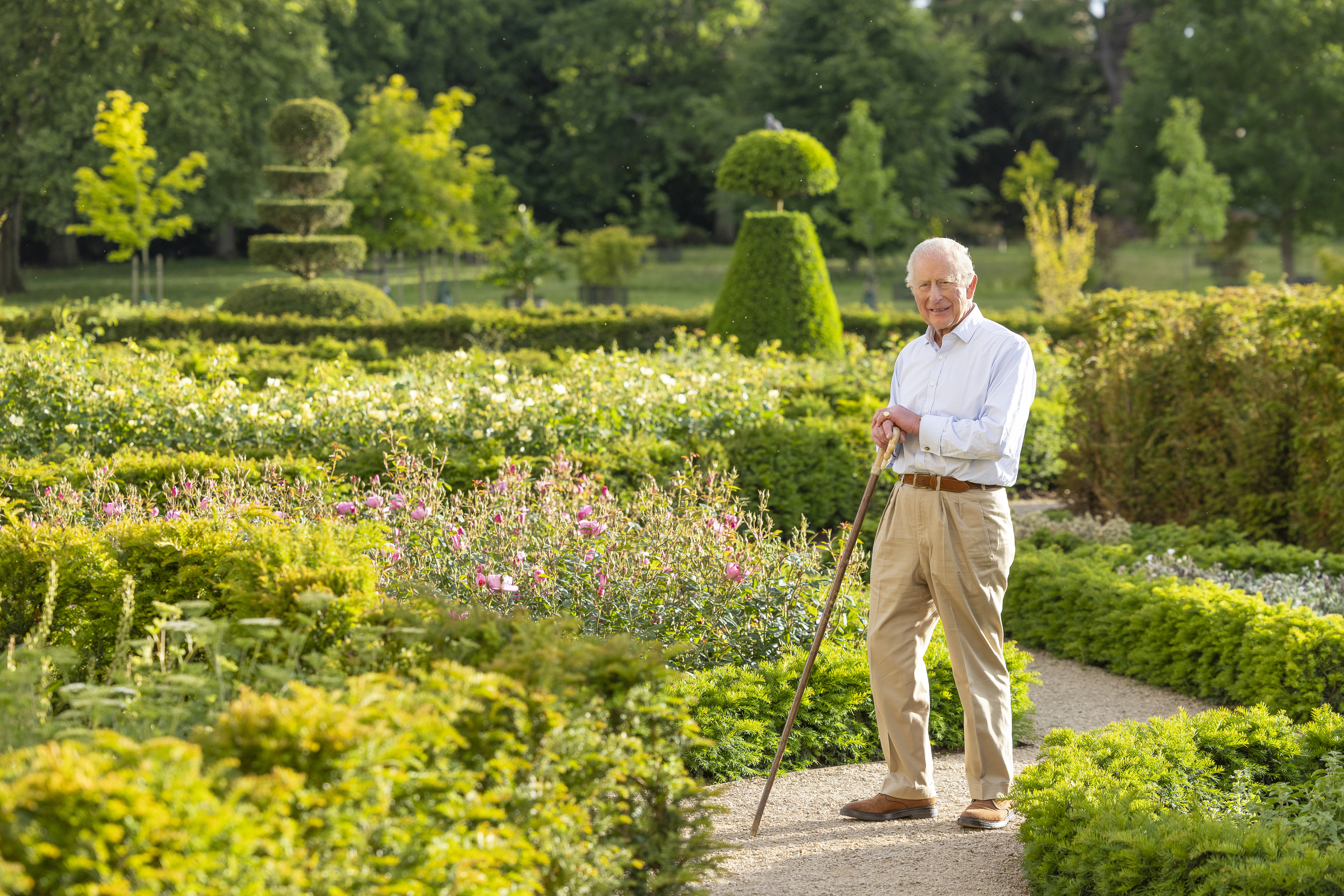 Exclusive: The King's remarkable resurrection of the gardens and parkland at Sandringham
Exclusive: The King's remarkable resurrection of the gardens and parkland at SandringhamThe King took over the running of the 21,000-acre Sandringham estate in 2017 — and in the last three years has transformed it beyond recognition.
-
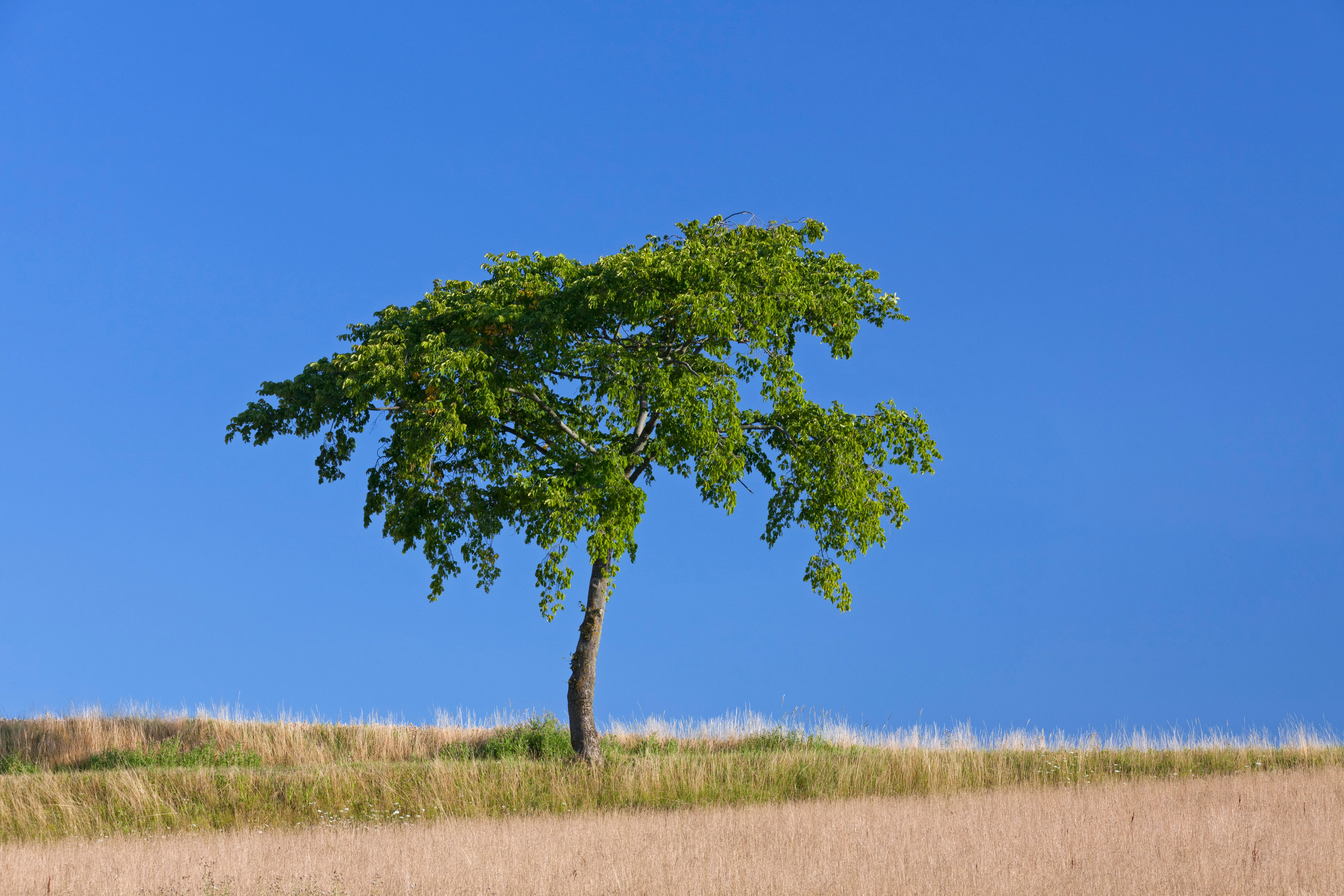 The trees that are as fine to eat as they are to look at
The trees that are as fine to eat as they are to look atMark Diacono doesn't grow many trees for the sake of the bounty they provide — but these are the notable exceptions.
-
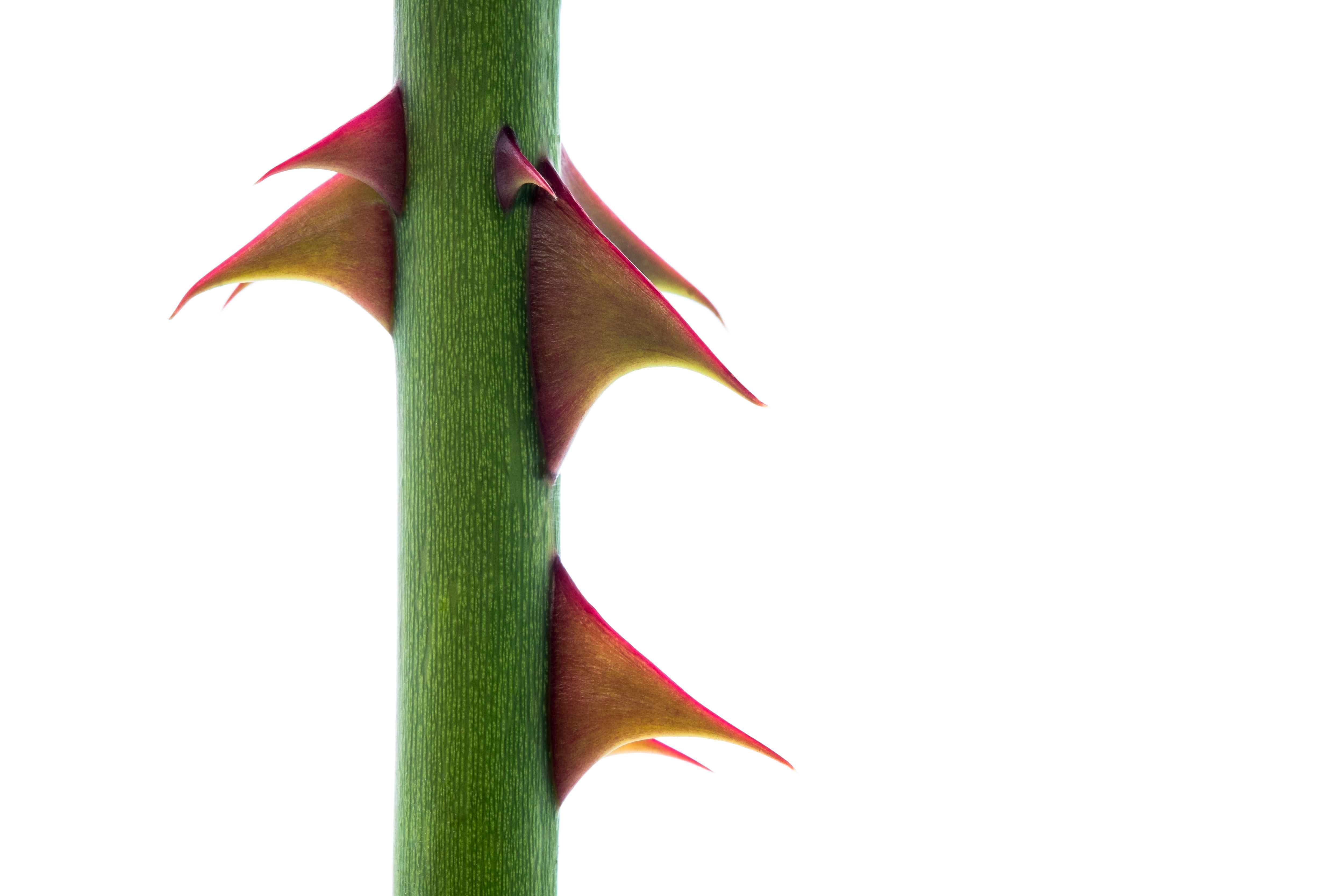 Bothered by brambles and snagged by sow thistles, but what is the point of all this thorny microaggression?
Bothered by brambles and snagged by sow thistles, but what is the point of all this thorny microaggression?Nature’s spiky deterrents — thorns, spines and prickles — may be quick to catch us out, but they can also prove to be a useful ally.